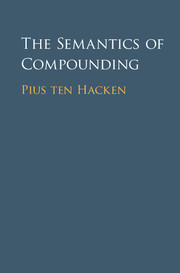Book contents
- The Semantics of Compounding
- The Semantics of Compounding
- Copyright page
- Contents
- Figures
- Tables
- Contributors
- Acknowledgements
- 1 Introduction: compounds and their meaning
- Part I Frameworks
- Part II Noun-noun compounds
- Part III Other compound types
- Conclusion
- References
- Author index
- Subject index
- References
References
Published online by Cambridge University Press: 05 May 2016
- The Semantics of Compounding
- The Semantics of Compounding
- Copyright page
- Contents
- Figures
- Tables
- Contributors
- Acknowledgements
- 1 Introduction: compounds and their meaning
- Part I Frameworks
- Part II Noun-noun compounds
- Part III Other compound types
- Conclusion
- References
- Author index
- Subject index
- References
- Type
- Chapter
- Information
- The Semantics of Compounding , pp. 233 - 246Publisher: Cambridge University PressPrint publication year: 2016

